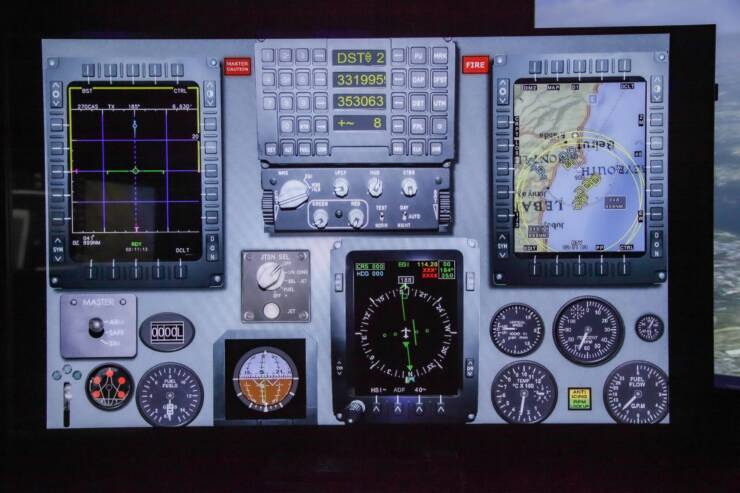
Tel Aviv: German based company ESG Elektroniksystem- und Logistik-GmbH and Israel Aerospace Industries (IAI) have signed a cooperation agreement to provide the German Armed Forces a proven, agile and robust cross-platform Network Centric Warfare (NCW) solution to meet the challenges of the future.
With “NEOS” – Network Enabled Operations Support – ESG and IAI enable joint all-domain operations including airborne, naval and ground platforms. NEOS is based on IAI´s combat proven OPAL solution that has a long history of operational use in the Israel Defense Forces catering to real-time interoperability across a diverse range of combat platforms. Together, ESG and IAI will provide a developed cross-domain, cross-platform connectivity, combining the deep technological understanding and extensive experience of both companies.
The NEOS solution will enable the German Armed Forces to achieve independence by integrating a variety of German systems and sensors, while introducing unique German-based operational capabilities.
Christoph Otten, ESG´s CEO underlined the strategic significance of the cooperation on NEOS: “For us, as the national technology and innovation partner of the Bundeswehr, it is part of our philosophy to develop and to provide solutions and products that meet the needs and expectations of those who protect us every day in any domain. We must enable them to fulfil their challenging task with robust, reliable and high-performing technology. Thus, we are very happy to cooperate with IAI on NEOS, bringing in especially our proven capabilities in the field of systems integration, software development and in-service support.”
Yosef (Yossi) Melamed, IAI´s Executive Vice President and General Manager of Aviation Group, added: “IAI’s OPAL system is an open architecture platform and a significant force multiplier for the challenges on the modern battlefield. OPAL has been in operation for many years, participating in every operational activity, and boasts a major contribution to success in that it enables completely adaptable communication and operational capabilities across aerial, naval and ground forces.
The OPAL decentralized battle management system developed by Israel aerospace industries (IAI) is used by the Israeli Air Force and is combat proven. The unique system is currently evaluated by some air forces.
According to Barak Israel, product line manager at the IAI Aviation group, OPAL is an innovative solution that connects between all platforms in the battle arena, manned and unmanned alike. He explained that OPAL is based on forming a decentralized communication cloud for all members on the ground, in the air, and at sea, to allow real time information sharing. This allows all members to exchange relevant information in order to achieve a comprehensive operational picture of the battlefield.
The IAI official explained that OPAL relies on a secure and proven communication network that connects different networks and platforms without fixed base stations. “OPAL is compatible with any platform, including advanced fighter aircrafts, tanks, ships or ground troops.”
According to IAI, the OPAL solution provides an unprecedented range of proven capabilities and operational flexibility, which allows for optimal utilization of the available resources to maximize effectiveness for a wide range of missions. OPAL is installed in variety of advanced fighters, attack helicopters, refuelling aircrafts, UAVs, ships, Command and Control centres, as well as mobile and fixed base stations.
Elaborating further, Barak Israel said that OPAL provides its users with several significant benefits: Optimized effectiveness in accomplishing mission goals by generating and sharing a Common Operating Picture in real time; providing interoperability of 5th generation fighter aircraft with legacy platforms, maximized utilization of resources and the ability to execute multiple missions within a given timeframe. In addition, he said the system Improves survivability by sharing threat data with air and ground forces, to avoid entry into danger zones. The systems also provides enhanced flight safety with the collision avoidance warning indications which alerts pilots of near-collision conditions and provides visual avoidance manoeuvres. This capability has saved numerous lives in recent years.

As reported by Raksha Anirveda, one of the key obstacles to interoperability is the challenge of achieving common situational awareness across different forces. Consider this simple example: a soldier sees a threat in the second window of the third building to his left. He uses this perspective to describe the situation to the attack helicopter that will neutralize the threat. The pilot must then interpret the message according to his own point of view – a subjective process, vulnerable to human error. By enabling the sharing of a location, or a video image of the scene, OPAL provides a common and objective operating picture to ground, naval and land forces, enhancing situation awareness and facilitating interoperability.
The company also said that in battle, speed and agility are crucial to gaining a tactical advantage. Unlike other systems available today, OPAL requires no preplanning in order for stakeholders to communicate. The ad-hoc distributed cloud enables real-time data generated by both on-board platform sensors and stationary communication stations to be instantly distributed and shared among different network members, so they can take the necessary action to achieve maximal operational efficiency.
IAI emphasized that when it comes to avoiding collision or projectile attack, 8-10 seconds is simply too long for an airborne entity to wait to receive critical information. When time is of the essence, OPAL’s incredibly high speed and refresh rate ensures minimal delays and instant response.
According to IAI, the current trend to use multiple communications solutions, each tailored to meet the needs of specific projects, users or platforms, results in data silos that prevent interoperability. Implementing OPAL as an overarching, unified layer of communications across naval, air and land forces ensures that all relevant parties can access the available data and see the same operational picture.
IAI explains that OPAL includes an advanced data fusion engine which helps the pilot to extract relevant data from numerous systems, in order to reduce display clutter and improve mission efficiency. So, for example, if a specific target is displayed both within the electronic warfare system and on the platform radar, it will be consolidated into one target, via OPAL’s advanced and customizable logic. In fact, any type of underlying radio solution may be used to establish the physical data link, with OPAL reliably serving as the hub between different communications technologies.
The Israeli company says that the unified infrastructure that OPAL provides across different platforms also provides the agility and flexibility to enable additional operational capabilities to be introduced as the need arises, relatively quickly and without incurring prohibitive costs. Being based on open architecture software, OPAL enables this to be achieved independently of the platform OEM, and without the comprehensive end-to-end testing usually required.
-The writer is an International Roving Correspondent of the publication.








